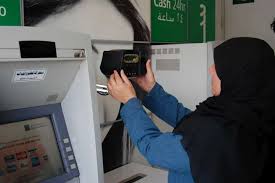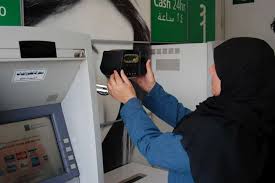
There are huge surge Syrian Refugees in Jordan, a country that has a population about the size of New York City. United Nations reports suggest that of millions of Syrians displaced by civil war and the attacks by Isis, more than 630,000 reside in Jordan.
However despite the huge population of refugees in contrast to the population of the country, there has not been blockages and clogs in lines of refugees lining up to get registered as is often seen in some of the European countries where registration of the Syrian refugees tales a long time with resultant clogging in the line of the refugees.
This has been possible due to a state of the art technology of portable iris-scanners that looks like it belongs in "Men in Black" or "Minority Report."
The method by which the U.N. has distributed $120 million in aid to almost 2 million refugees across the Middle East has been changed by iris-scanning technology, according to Andrew Harper of the United Nations High Commissioner for Refugees (UNHCR).
"Refugees don't have to come to us, they can just go to a bank fitted with iris scanning, so we've not had to deploy any staff for procurement, transportation or warehousing," Harper said.
"We are able to give refugees the money at the time of their choosing and they can use it for the reasons they believe they are most important. It reinforces the dignity of the refugee, and human dignity is the basis of almost everything we do. We have more money to help people that are most in need," he added.
After the UNHCR saw how the technology was already being used in banks, ATMs and airports across the Middle East, it started deploying the iris scanning technology. The iris of a customer was scanned using non-invasive technology that is more precise than fingerprint readers once a bank or government agency went through the initial vetting of a person's documentation. Eliminating the need for passports or bank cards to slow down the line, ATMs and airports then used the database provided by the bank and the government agencies to verify identities.
The overhead for the refugee program has shrunk from almost 20 percent to around 2 percent since the pilot project in 2013, says Harper.
Iris scanning has helped the U.N. deal with challenges like fraud, cybersecurity, privacy and family services, in addition to integrating refugees into the normal banking system and reaching the more than 80 percent of refugees that live outside of camps, Harper said.
This technology, for example, come in handy Since more than 50 percent of refugees that are children and cannot be accurately fingerprinted, the iris scans can follow migrants from one camp to another. While preventing the cards containing aid money from being stolen and resold, the scans also prevent members of extremist groups from misrepresenting themselves.
The number of refugees requesting aid dropped 30 percent there which resulted in fraud reduction after iris scanning was introduced for Iraqi refugees.
"What can happen if you use vouchers or PIN numbers or ATM cards, you can have somebody to go back to Syria and sell the PIN code and sell it for a proportion of its value," Harper said.
(Source:www.cnbc.com)
However despite the huge population of refugees in contrast to the population of the country, there has not been blockages and clogs in lines of refugees lining up to get registered as is often seen in some of the European countries where registration of the Syrian refugees tales a long time with resultant clogging in the line of the refugees.
This has been possible due to a state of the art technology of portable iris-scanners that looks like it belongs in "Men in Black" or "Minority Report."
The method by which the U.N. has distributed $120 million in aid to almost 2 million refugees across the Middle East has been changed by iris-scanning technology, according to Andrew Harper of the United Nations High Commissioner for Refugees (UNHCR).
"Refugees don't have to come to us, they can just go to a bank fitted with iris scanning, so we've not had to deploy any staff for procurement, transportation or warehousing," Harper said.
"We are able to give refugees the money at the time of their choosing and they can use it for the reasons they believe they are most important. It reinforces the dignity of the refugee, and human dignity is the basis of almost everything we do. We have more money to help people that are most in need," he added.
After the UNHCR saw how the technology was already being used in banks, ATMs and airports across the Middle East, it started deploying the iris scanning technology. The iris of a customer was scanned using non-invasive technology that is more precise than fingerprint readers once a bank or government agency went through the initial vetting of a person's documentation. Eliminating the need for passports or bank cards to slow down the line, ATMs and airports then used the database provided by the bank and the government agencies to verify identities.
The overhead for the refugee program has shrunk from almost 20 percent to around 2 percent since the pilot project in 2013, says Harper.
Iris scanning has helped the U.N. deal with challenges like fraud, cybersecurity, privacy and family services, in addition to integrating refugees into the normal banking system and reaching the more than 80 percent of refugees that live outside of camps, Harper said.
This technology, for example, come in handy Since more than 50 percent of refugees that are children and cannot be accurately fingerprinted, the iris scans can follow migrants from one camp to another. While preventing the cards containing aid money from being stolen and resold, the scans also prevent members of extremist groups from misrepresenting themselves.
The number of refugees requesting aid dropped 30 percent there which resulted in fraud reduction after iris scanning was introduced for Iraqi refugees.
"What can happen if you use vouchers or PIN numbers or ATM cards, you can have somebody to go back to Syria and sell the PIN code and sell it for a proportion of its value," Harper said.
(Source:www.cnbc.com)





